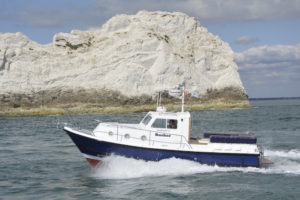There is nothing quite like the thrill of taking delivery of your first motor cruiser. Not everyone can afford to purchase a cruiser, so if it gives you a sense of one-upmanship that’s fair enough. You have worked hard to get to where you are, and you deserve the rewards.
However, in much the same way that you had to learn to drive a car, you have to learn to “drive” a cruiser – or in nautical terms skipper it and be the helmsman. It comes to the same thing really. But you can’t just jump into the cockpit and take off out to sea. You need some motor boat training.
If you go on holiday to the Norfolk Broads, as many people love to do, you probably get around half an hour’s training of handling the boat and showing you where to fill up with fuel and arrange for a “pump-out”. You can also find lots of FAQ’s on Google. However, on the Norfolk Broads you are normally travelling at around 4 mph top speed, so even if you hit anything you won’t do a lot of damage.
It is a completely different kettle of fish when you have a seagoing cruiser that can do 25 knots! This is why you need to spend some time on motor boat training so that you can handle your new purchase safely. In this case, a half hour will teach you nothing at all. You need at least a two-day training course just to cover the basics. That will get you going, but you still need further motor boat training if you want to expand your skills.
For instance, you may want to be able to handle your boat at night, and that is a very different proposition from operating in daylight. It is one thing travelling on the Broads where you can’t really get lost, but when you are at sea you need to know navigation and seamanship as well as how to handle your new toy. Some of these more advanced courses take a week or more but are well worth it for your own safety and those around you.

No comments:
Post a Comment